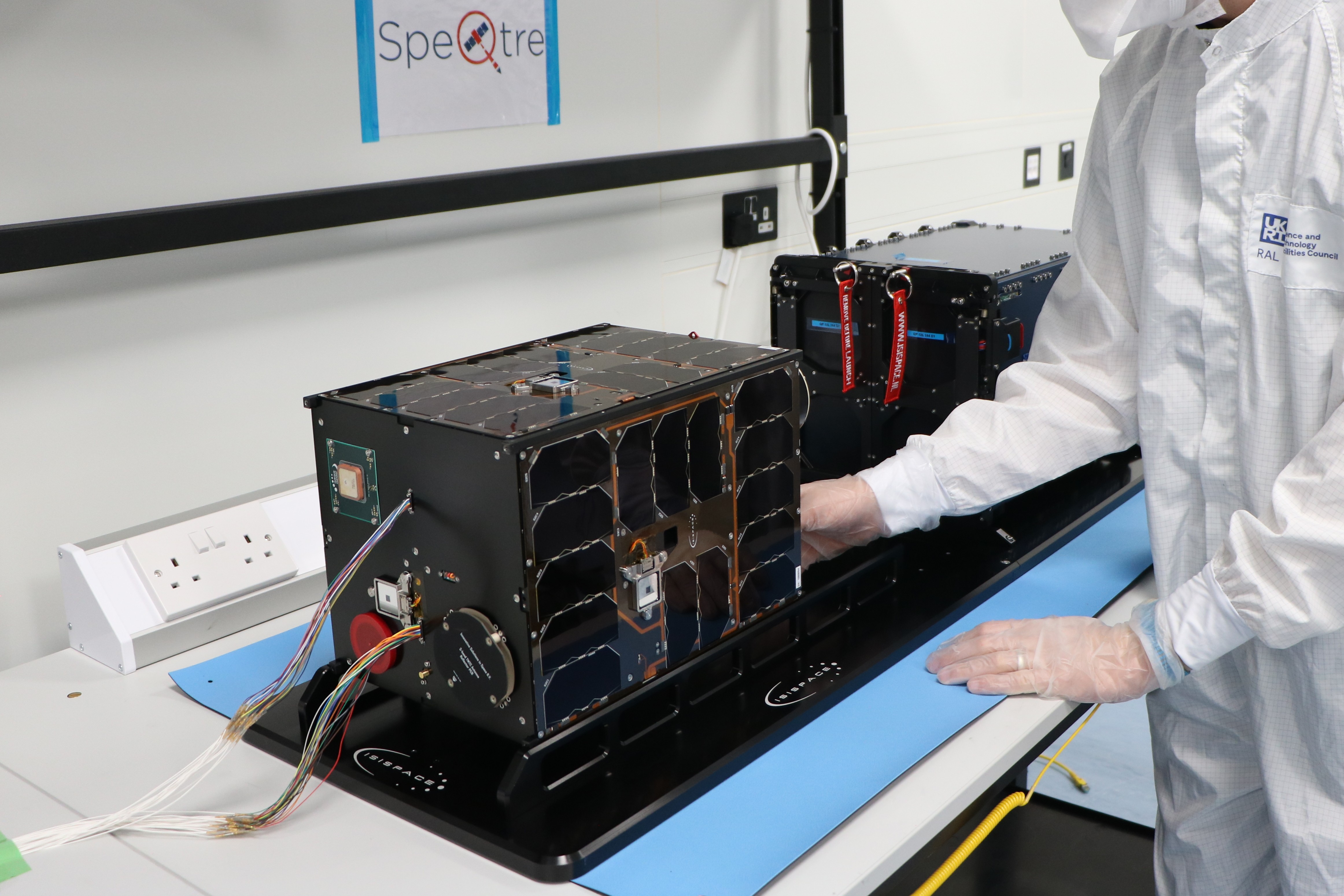
SpeQtre undergoing final preparations at RAL Space before being shipped for launch. Credit: STFC RAL Space
Space and quantum represent two vastly different frontiers – one reaching beyond our planet, the other delving into the tiniest concepts imaginable. Both sectors demand pioneering science and engineering at the very limits of what’s possible, and although combining them might sound like science fiction, this fusion might soon be essential to our digital security.
Quantum computing promises exciting breakthroughs in many fields, but it also poses a threat to current cybersecurity. Today’s encryption methods will eventually become vulnerable to hacking by these advanced computers.
But quantum technology also offers a possible solution. Encryption keys formed using quantum randomness are theoretically unhackable by any computational means.
Deploying this technology in space amplifies the difficulty of an already complex feat. However, it is crucial for enabling communication over long distances, creating powerful impacts on everyday lives and the economy. The European Space Agency (ESA) has recently signed a contract worth €50 million to begin the design phase of a new quantum mission, and UK leadership in quantum communications will help access a global market estimated to grow dramatically in the next decade.
UK-Singapore partnership set for space
The UK and Singapore are collaborating on SpeQtre – an in-orbit demonstration satellite providing valuable experience for both countries in exchanging quantum information from space to ground. This is the most difficult and secure form of communication, but the teams are attempting to overcome an even greater challenge: SpeQtre is designed to demonstrate this from a nanosatellite.
By scaling down this complex technology to fit a spacecraft roughly the size of a microwave oven, the mission aims to reduce costs and improve accessibility for future quantum communication missions, despite the inherent technical difficulties involved.
The UK’s contribution is led by the Science and Technology Facilities Council’s (STFC) RAL Space – the UK’s national space laboratory. RAL Space is overseeing the mission's space components and delivering the instrument that will beam quantum signals to Earth, whilst Singaporean quantum communications company SpeQtral is providing the quantum hardware. The satellite platform has been provided by ISISPACE.
SpeQtre stems from a UK-Singapore bilateral collaboration established as part of a 2018 inter-governmental initiative to generate business between the two nations. The project is part of the National Quantum Technologies Programme, administered by UK Research and Innovation, and is also supported by the Space Technology Development Programme, administered by Singapore’s Office for Space Technology & Industry (OSTIn).

Artist's impression of SpeQtre in space. Credit: ISISPACE
A novel approach to mission design
Taking a radically different approach from traditional space missions, the SpeQtre team has combined off-the-shelf products with cutting-edge technology through an experimental development process. This has enabled the mission to progress from concept to orbit more quickly and at a lower cost than comparable missions.
“The approach we’re taking to this mission is very exciting. We’re doing things quickly, cheaply and ultimately more creatively than what the space industry is generally used to,” says Andy Vick, Disruptive Space Technology lead at RAL Space and UK Principal Investigator for SpeQtre. “This kind of technology is hard enough as it is, but by doing things differently, we’re paving the way for future missions.”
SpeQtre is already informing the UK’s Quantum Networking Mission and future quantum space activities including SPOQC, a similar mission of the EPSRC Quantum Communications Hub, led by the University of York.
“What makes quantum communication fascinating is that it harnesses a fundamental law of physics to protect our information,” explains David Pearson, technical lead for SpeQtre at RAL Space. “The simple act of observing a quantum system changes its state, which means any attempt to eavesdrop on a quantum key will inevitably leave traces that we can detect.”
SpeQtre aims to provide proof of concept by sending entangled photons to a ground station run by RAL Space at the Chilbolton Observatory in Hampshire, and to a ground station in Singapore.
Next steps for launch
The spacecraft is due to launch in November 2025 aboard Space-X’s Transporter-15 SmallSat rideshare from Vandenberg Space Force Base in California.
Following launch, the satellite will undergo a commissioning phase where teams from RAL Space, ISISpace and SpeQtral will verify their systems are functioning correctly before experiments can begin in early 2026.
“The SpeQtre mission is a bold leap forward in quantum communications. Its development has pushed the boundaries of what’s possible in engineering and science and is a testament to our team's relentless pursuit of innovation. Achieving space-to-ground exchange of quantum information from a nanosatellite will be an extraordinary technical challenge, and we are proud to be at the forefront of this global effort to redefine cybersecurity for the future,” said Dr. Robert Bedington, Cofounder and CTO at SpeQtral.
